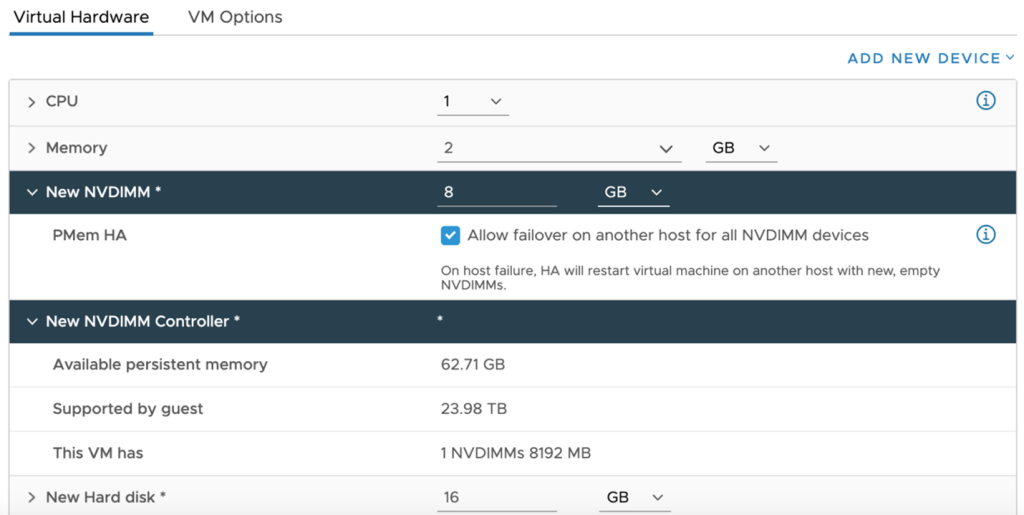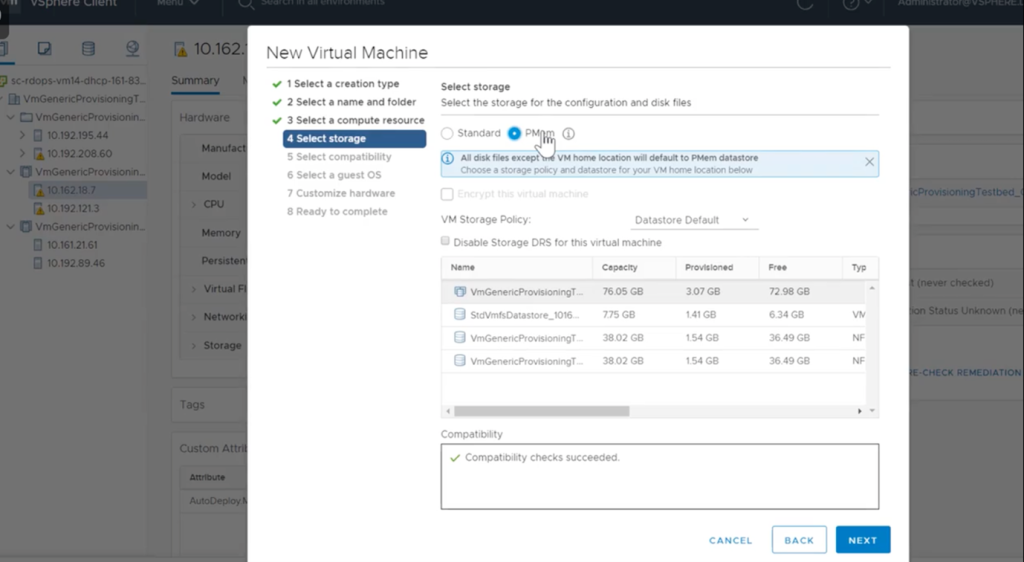(Blog post by Paul Turner, Vice President, vSphere Product Management, VMware)
Intel recently announced that it is winding down the Intel Optane business (Intel Q2 earnings call). They also committed to supporting Optane customers for existing Optane persistent memory and Optane SSD product lines through end-of-life. Intel product warranty terms remain unchanged, with the normal 5-year warranty upon date of sale and technical support available during the warranty period. This includes the PMem 100 series (“Apache Pass”), PMem 200 series (“Barlow Pass”) and the DC P4800X SSD (“Cold Stream”), and the DC P5800X (“Alder Stream”). Intel will also continue development of the Intel Optane persistent memory (PMem) 300 series (codenamed “Crow Pass”) on 4th Gen Intel Xeon Scalable processors (codenamed “Sapphire Rapids”).
This continued support for the product line is great news for VMware and our customers.
VMware is planning to continue supporting Intel Optane PMem with vSphere 7.x and 8.x releases in all the currently supported configurations. VMware is also planning to continue supporting Intel Optane SSDs with vSAN 7.x and 8.x releases in all the currently supported configurations.
It is worth a reminder of the valuable features we support today with Intel Optane in our current products. VMware has enabled several PMem-based features that utilize both the volatile and non-volatile nature of PMem such as those documented in the product documentation and explained further in this technical blog. PMem is available in the traditional Memory mode, App-Direct mode through vPMem, or as persistent storage through the vPMemDisk object. This support allows for a more cost-effective memory tier to be used and hence reduces customers’ overall costs.
The below figure shows configuration for a PMem-based NVDIMM or vPMem:
The following two figures show configuration for a vPMemDisk:
VMware also added advanced memory capabilities with vMMR in vSphere 7 Update 3 and has complemented it with DRS capabilities in vSphere 8 to better manage resources across the cluster. An overview video of the new memory capabilities in vSphere 8 can be viewed here. More information about vMMR can be found here.
Just as VMware has supported all previous generations of Intel Optane PMem as outlined in KB Article 67645, VMware intends to enable the newer, next generation Intel Optane PMem 300 series on 4th Gen Intel Xeon Scalable processors in the existing modes – Memory Mode and App Direct – for customers who want to upgrade and continue using PMem in the aforementioned configurations on newer platforms.
We will also continue our investment in memory optimization and efficiency technology for our customers. At VMworld 2021, VMware announced Project Capitola, a big-memory initiative that can aggregate multiple tiers of different memory types in software to deliver a uniform consumption model that is transparent to applications. This software-based (or software-defined) memory tiering hides the complexity of managing a secondary memory tier in addition to DRAM by providing a single, uniform memory address space.
In light of the Intel announcement, VMware will shift Project Capitola focus to CXL-based memory technologies and not support for Intel Optane PMem for this use case. CXL is an industry-supported cache-coherent interconnect and represents a ground-breaking technology to expand memory in ways that can provide a lot more value to our customers. VMware is still fully committed to solving customer pain-points and will release software tiering with technologies such as CXL in the future, allowing for CXL-based memory tiers to be used. This effort will also eventually lead toward VMware’s big memory vision for providing memory pooling and memory disaggregation.
At VMware Explore 2022, VMware and Intel will jointly present a session on software memory tiering and showcase several performance studies done with micro–benchmarks and real-world business application use cases such as Oracle. We will also share our direction with CXL. Details of the session can be found here.
– Paul Turner, Vice President, vSphere Product Management

















